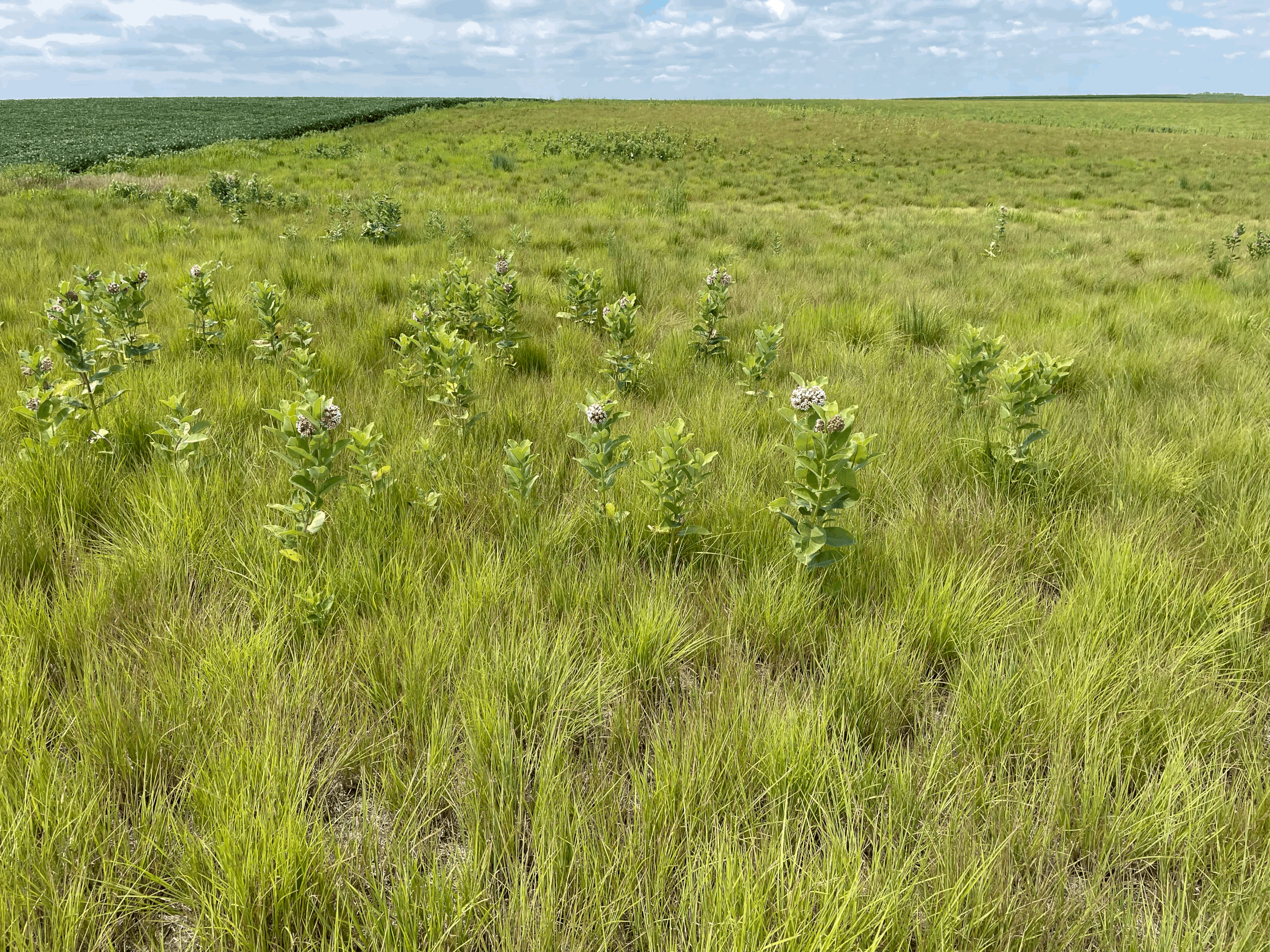 Image 1 of 3
Image 1 of 3

 Image 2 of 3
Image 2 of 3

 Image 3 of 3
Image 3 of 3




Common Milkweed (Asclepias Syriaca)
Bloom Period - June, July, August
Life Cycle - Perennial
Sun Exposure - Partial, Full
Soil Moisture - Medium wet to dry
Seeds/oz - 4,000
Common Milkweed is the ultimate butterfly plant, though it is eaten by over 400 native insects. It is highly nutritious and desirable to all our little crawling friends. For butterflies specifically, it is one of the only plants that monarch butterflies will lay their eggs on, making it an essential piece to the survival of the bright orange butterflies.
Common Milkweed stands anywhere from 2 to 4 feet tall and has a bright pink flowering ball towards the top. It also has broad leaves climbing the whole stem. If the leaves or stem are broken, Common Milkweed will “bleed” out a milky substance giving it the name “milkweed”. The seed comes from pear shaped pods. These pods carry many seeds each, and on the end of each seed is a feather-like fuzzy that helps the seed fly to find a new home.
Bloom Period - June, July, August
Life Cycle - Perennial
Sun Exposure - Partial, Full
Soil Moisture - Medium wet to dry
Seeds/oz - 4,000
Common Milkweed is the ultimate butterfly plant, though it is eaten by over 400 native insects. It is highly nutritious and desirable to all our little crawling friends. For butterflies specifically, it is one of the only plants that monarch butterflies will lay their eggs on, making it an essential piece to the survival of the bright orange butterflies.
Common Milkweed stands anywhere from 2 to 4 feet tall and has a bright pink flowering ball towards the top. It also has broad leaves climbing the whole stem. If the leaves or stem are broken, Common Milkweed will “bleed” out a milky substance giving it the name “milkweed”. The seed comes from pear shaped pods. These pods carry many seeds each, and on the end of each seed is a feather-like fuzzy that helps the seed fly to find a new home.
